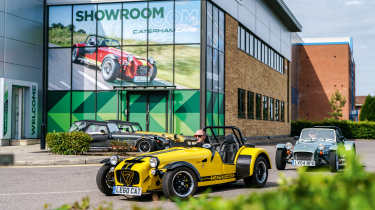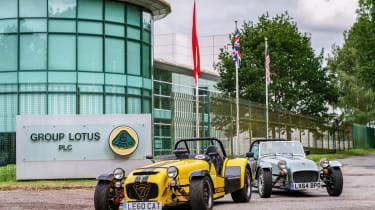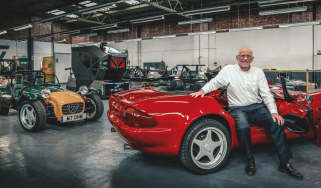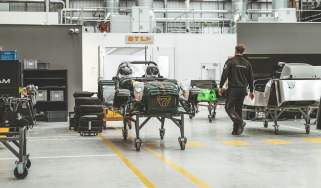Caterham cars at 60 – history, present and future of the British sports car brand - Old Lotus factory - genesis
As Caterham celebrates its 60th birthday we drive both extremes of the Seven range on a road trip to the places that built the brand
Old Lotus factory – genesis
Before long we’re peeling off the motorway and heading towards Cheshunt. It’s here, on a scrappy industrial estate, that we find the old Lotus factory on Delamere Road, which the company moved into in 1959 when the success of the Seven and the firm’s increasingly ambitious motorsport activities meant the original facility in Hornsey, north London, became too small.
Designed in 1957 as a simple and affordable sports car, the Lotus Seven featured a tubular spaceframe chassis, aluminium body panels, a live rear axle, drum brakes and a 1-litre four-cylinder engine from the Ford 100E saloon. Complete cars cost £1036, or buyers could wield the spanners themselves – and save on the purchase tax, which was a forerunner of VAT – for £536.
We find the Cheshunt factory buildings intact and still in use. The shed where the Seven was assembled is now a gym, but its façade still features the same large door on the second floor, where complete cars were craned down to the ground. The larger unit next door is also in one piece, including the concrete ramp that was used to carry Elites and Lotus Cortinas off the production line. As we poke around, it’s not hard to imagine the sound of a twin-cam motor reverberating among the red brick walls.
Less than a year after setting up in Cheshunt, Lotus launched the Series 2 Seven. Featuring a wider track, glassfibre panels and a simplified chassis for easier and cheaper construction, the newer car looked much like the modern-day Caterham. Under the bonnet was the choice of a newer 1-litre Ford engine from the 105E or Austin’s A-series unit. Later came 1.3- and 1.5-litre Ford Kent motors, which when tweaked by Cosworth could deliver 85bhp and 95bhp respectively. Luxuries such as a heater and sidescreens also became available, as did the option of front disc brakes.
The Seven’s popularity grew further, and with the birth of the hugely desirable Elan and Lotus’s continued Formula 1 success, it wasn’t long before another move was on the cards. In 1966 Chapman upped sticks to Hethel in Norfolk, which is our next port of call.







